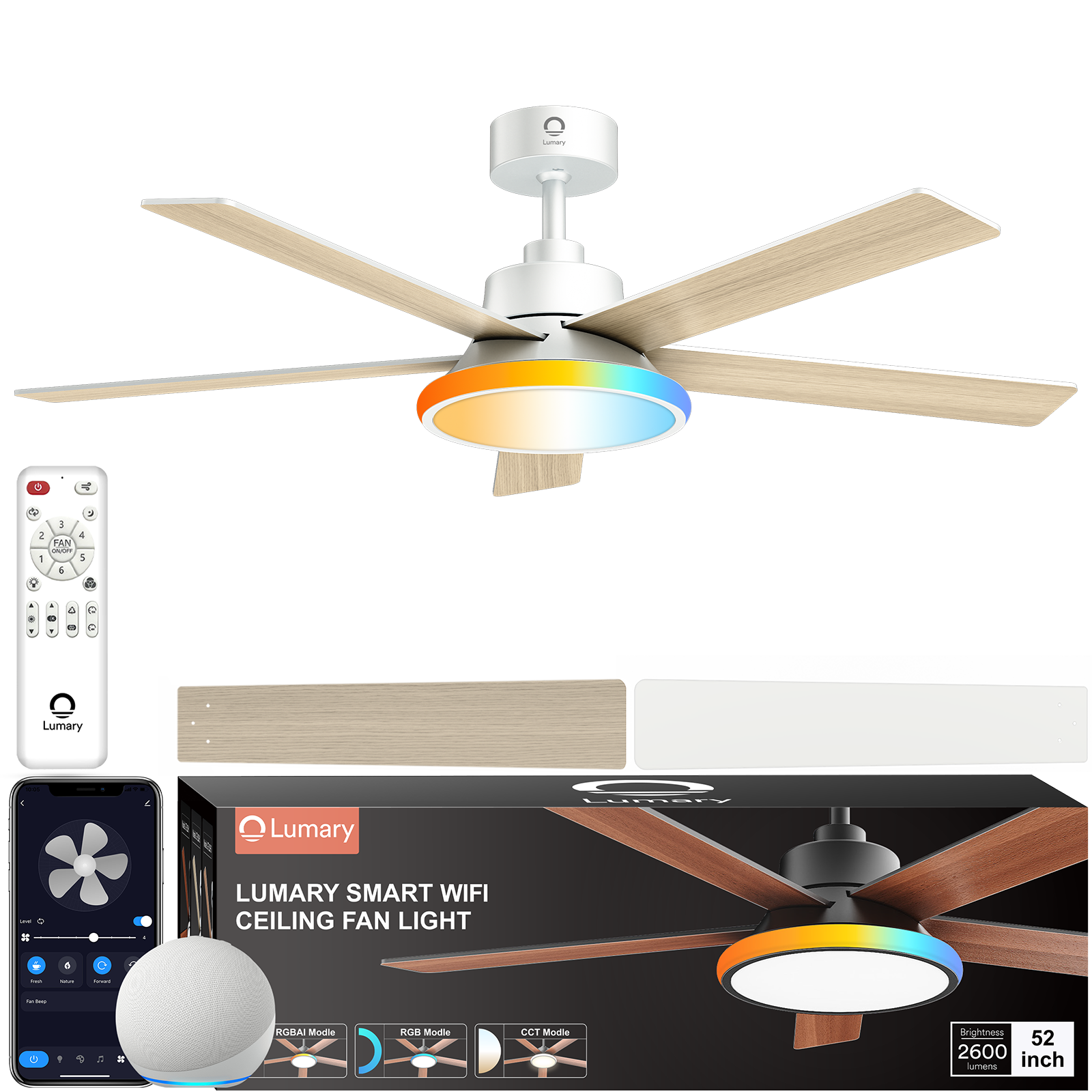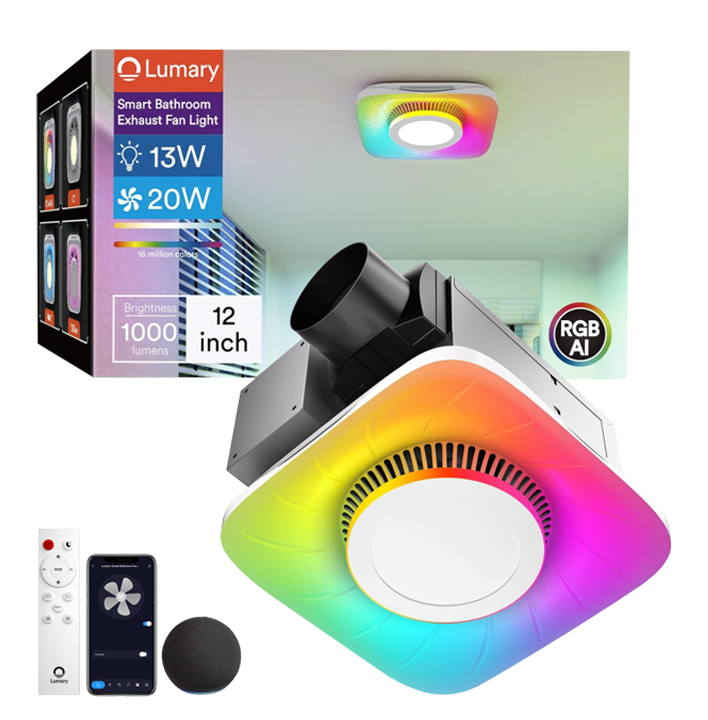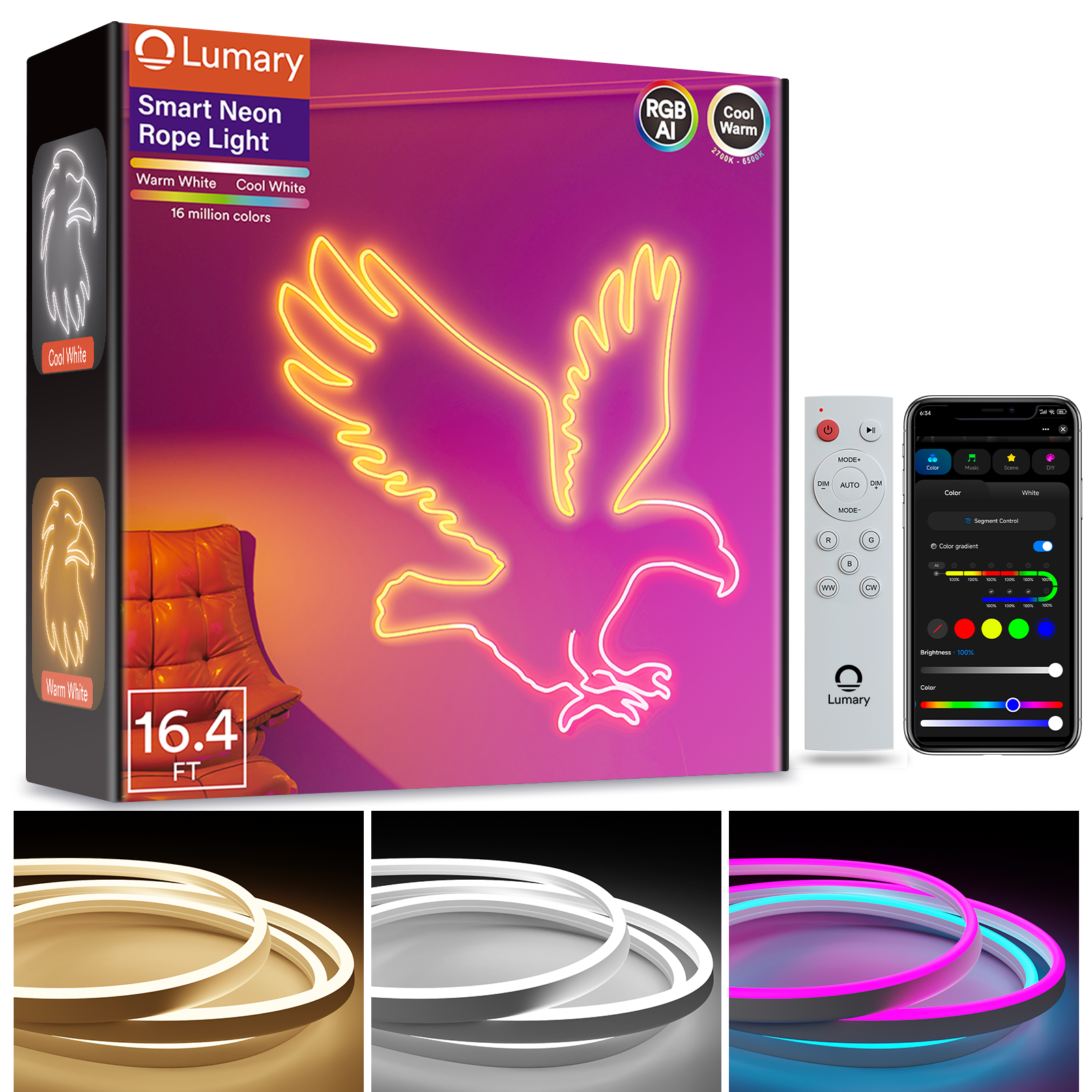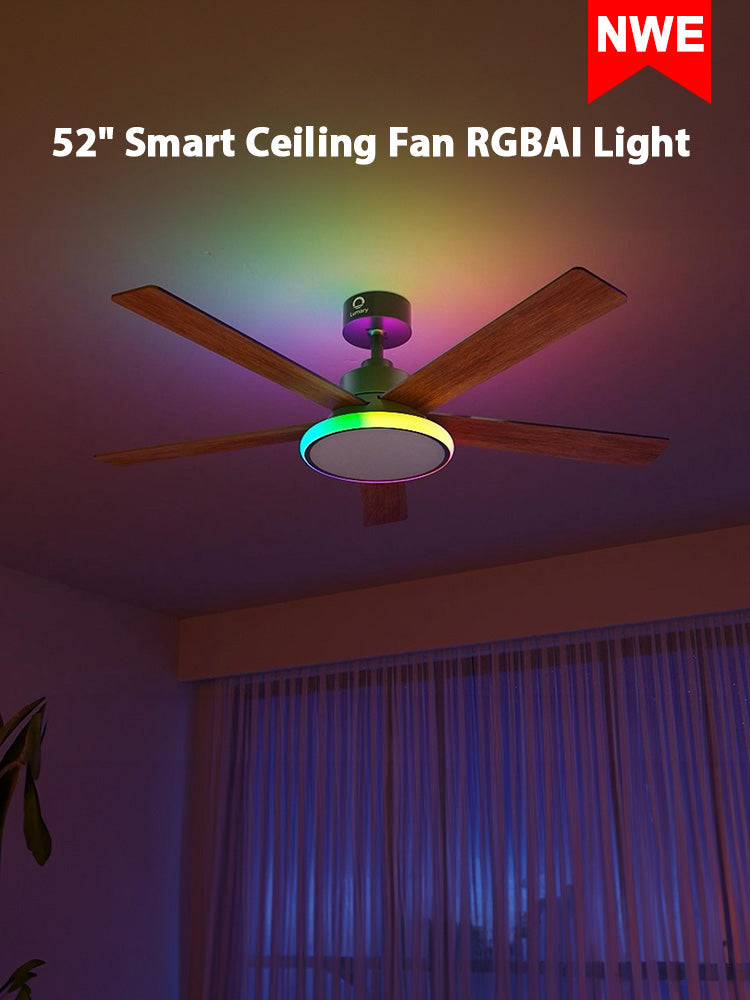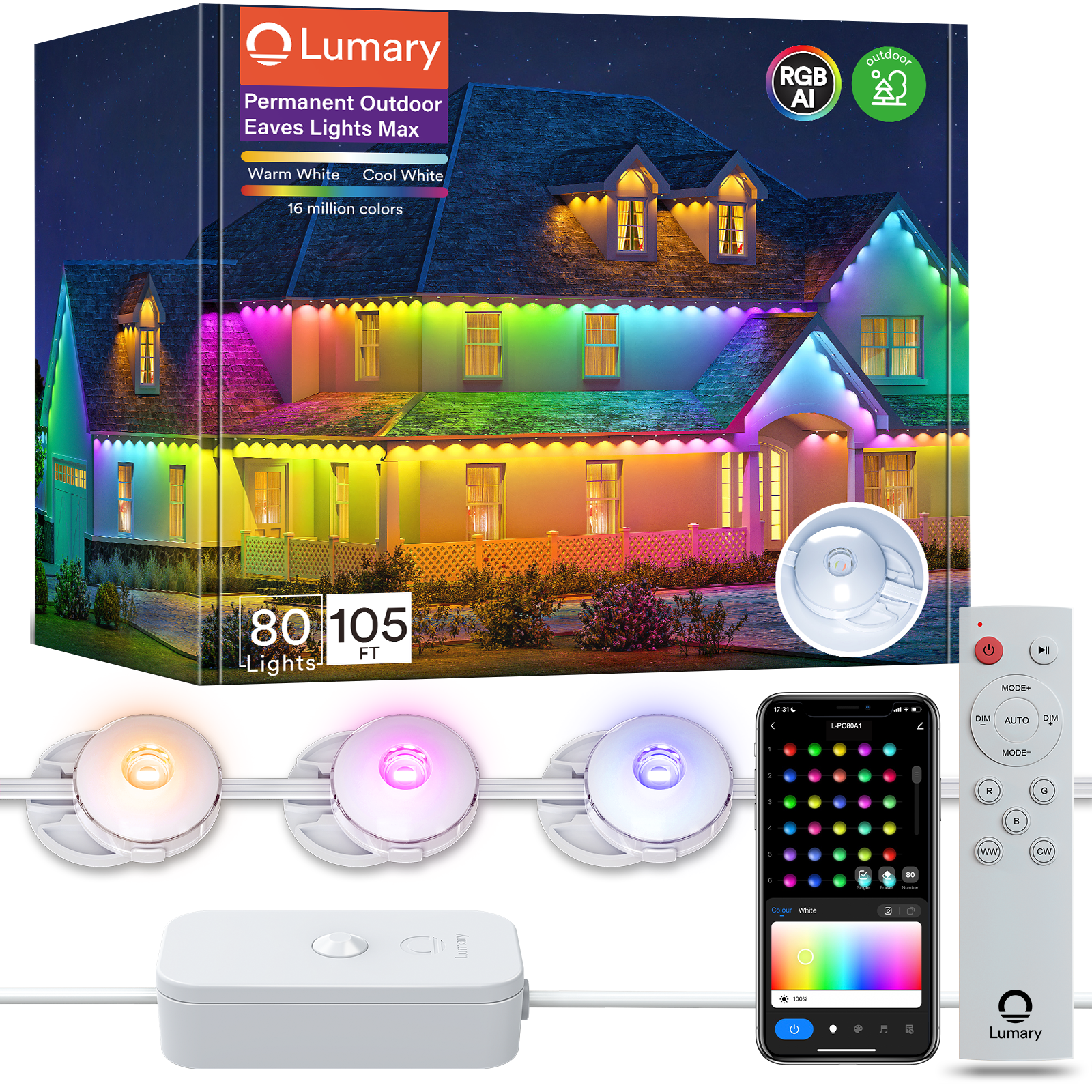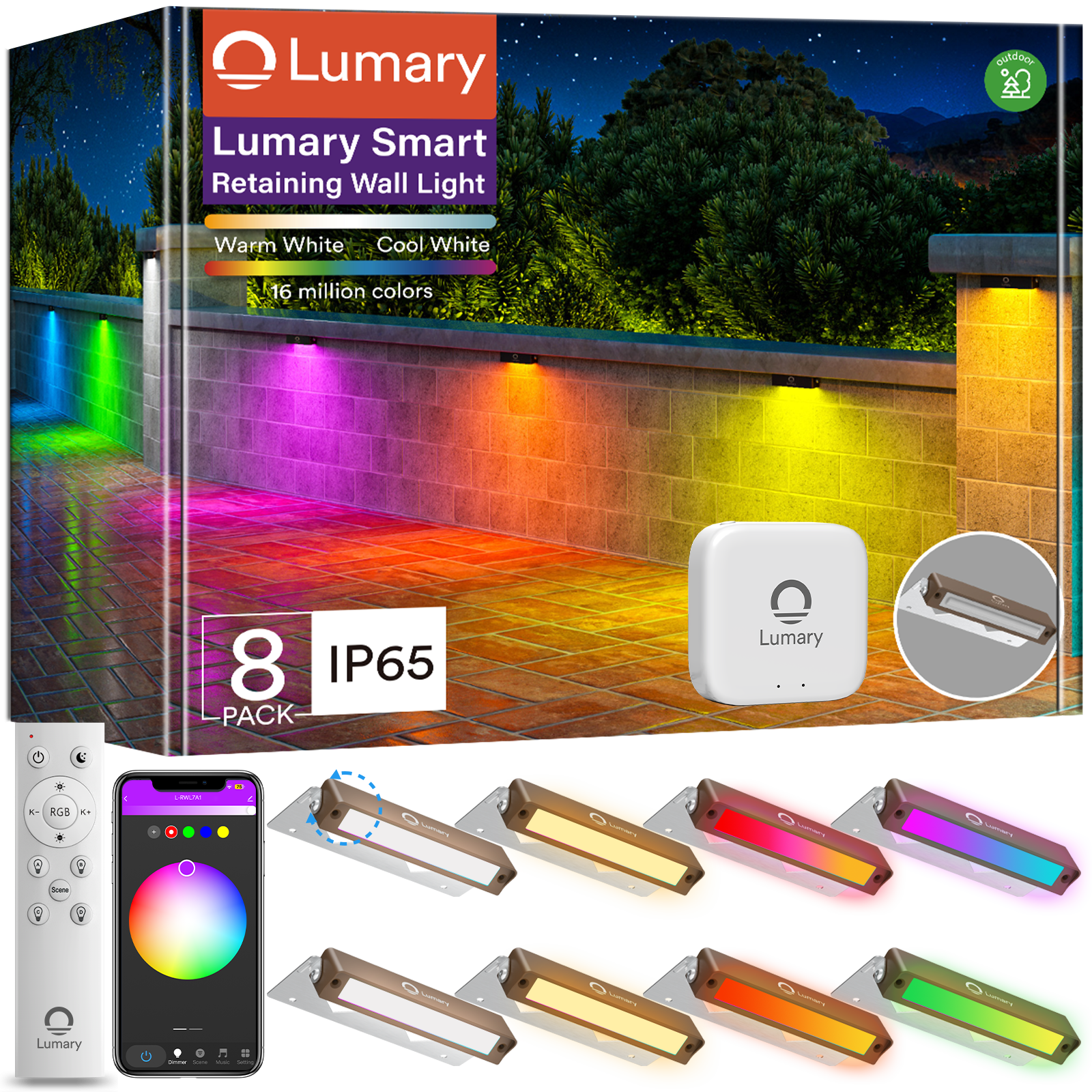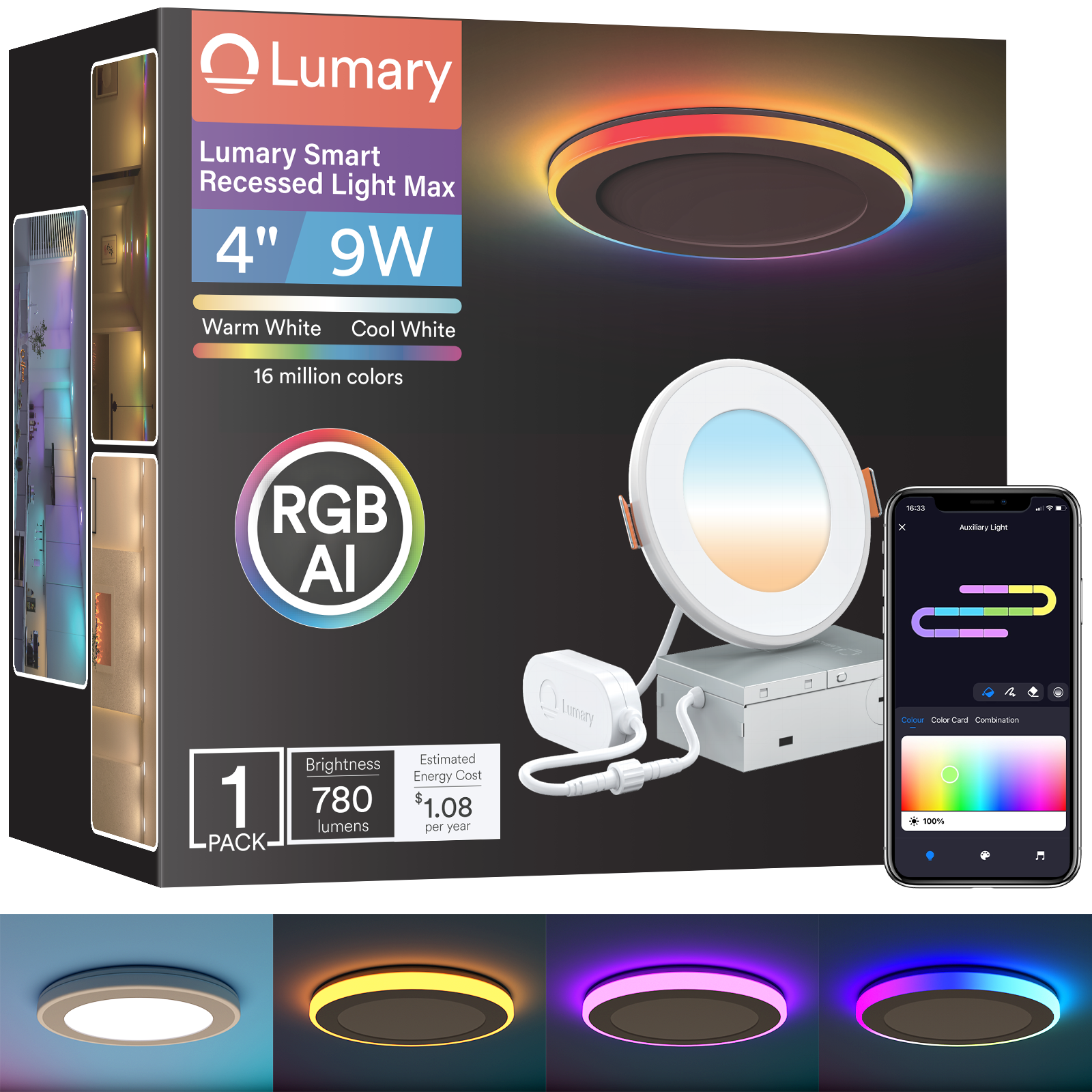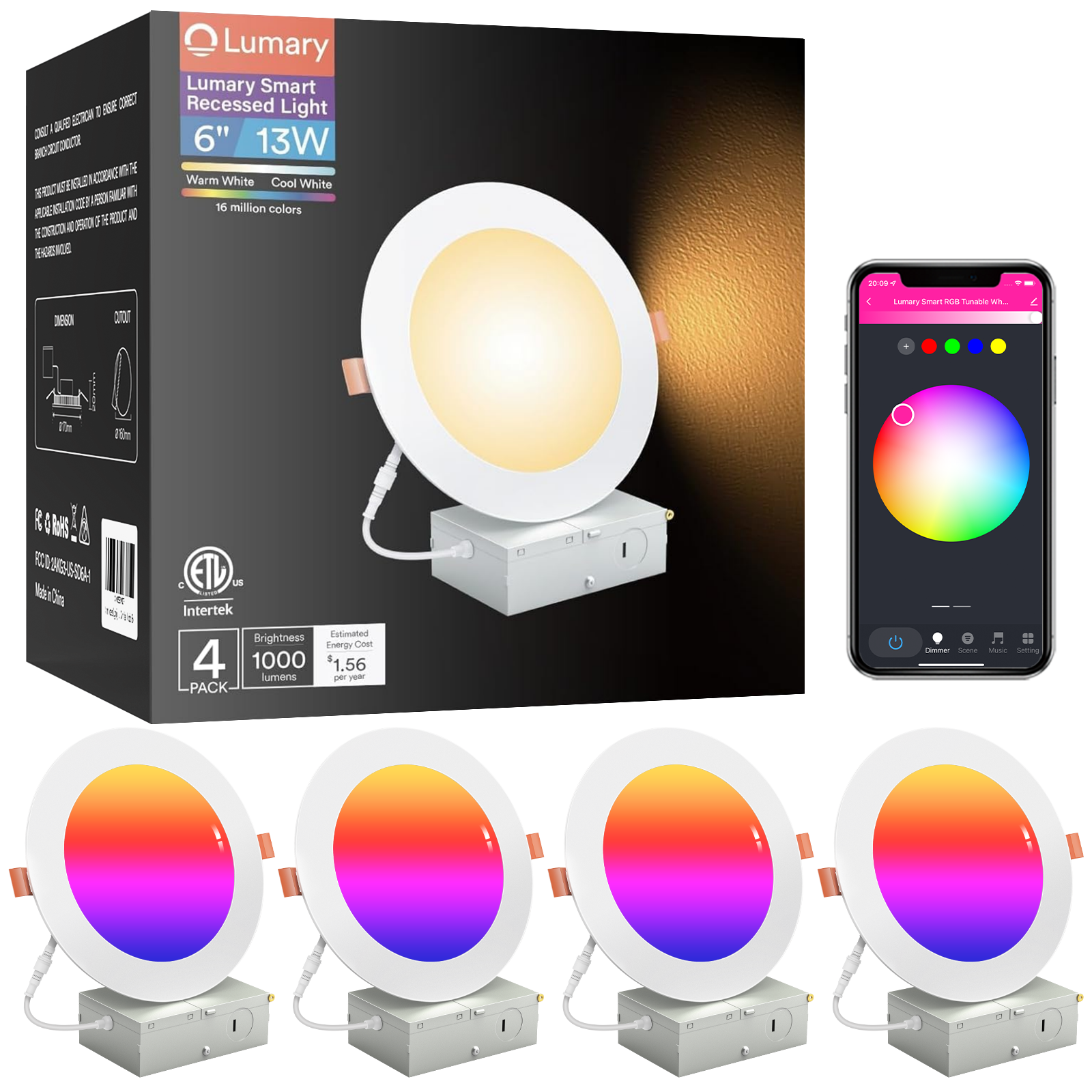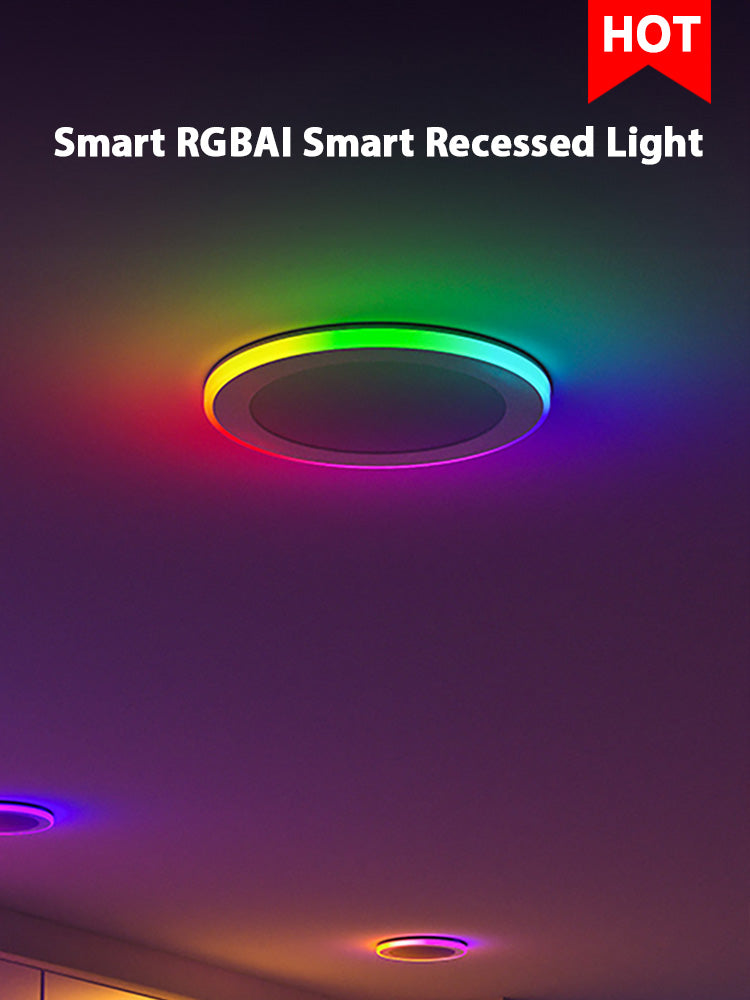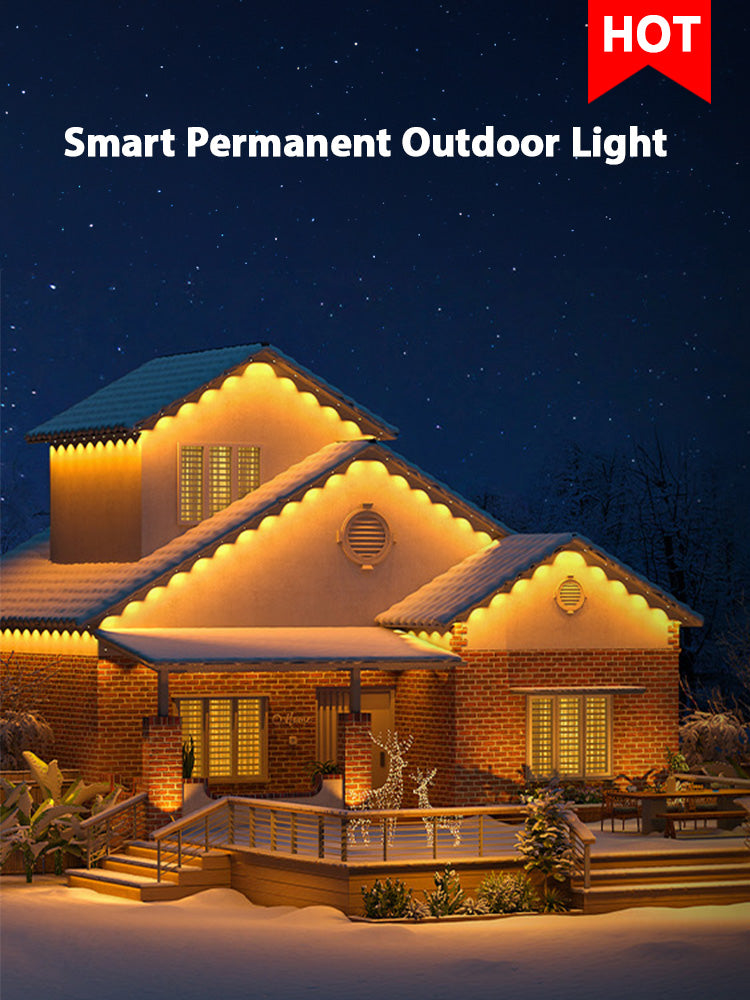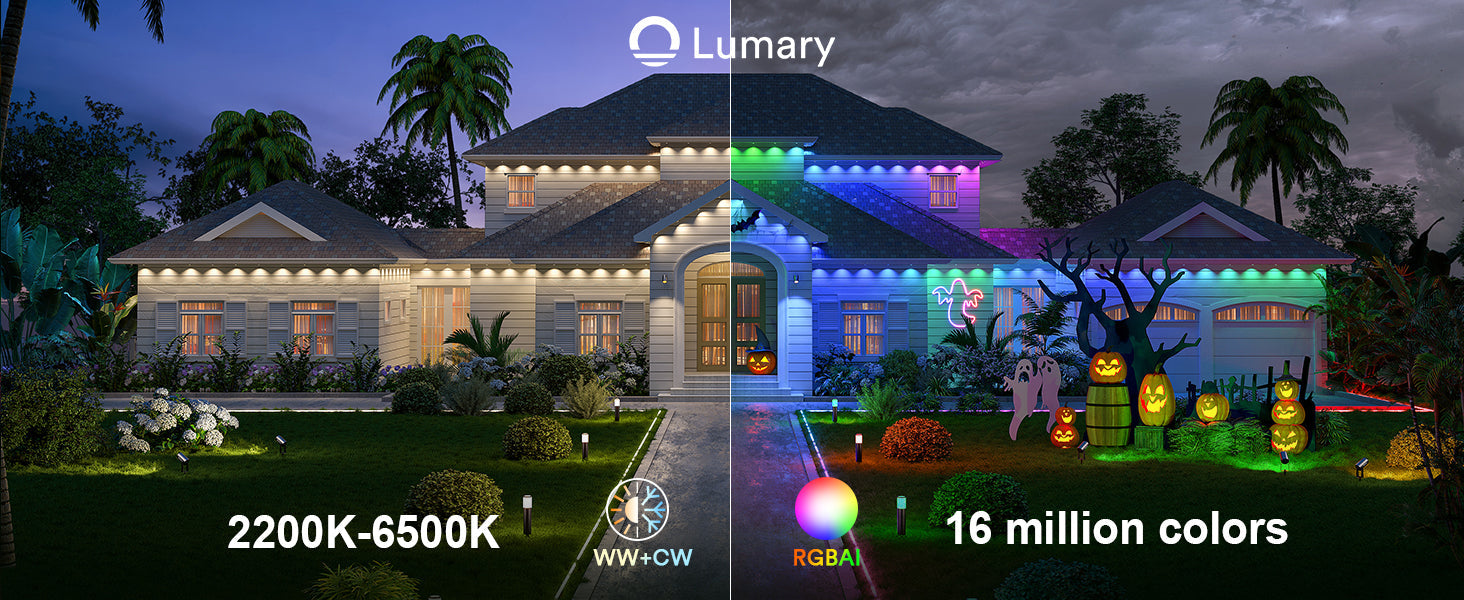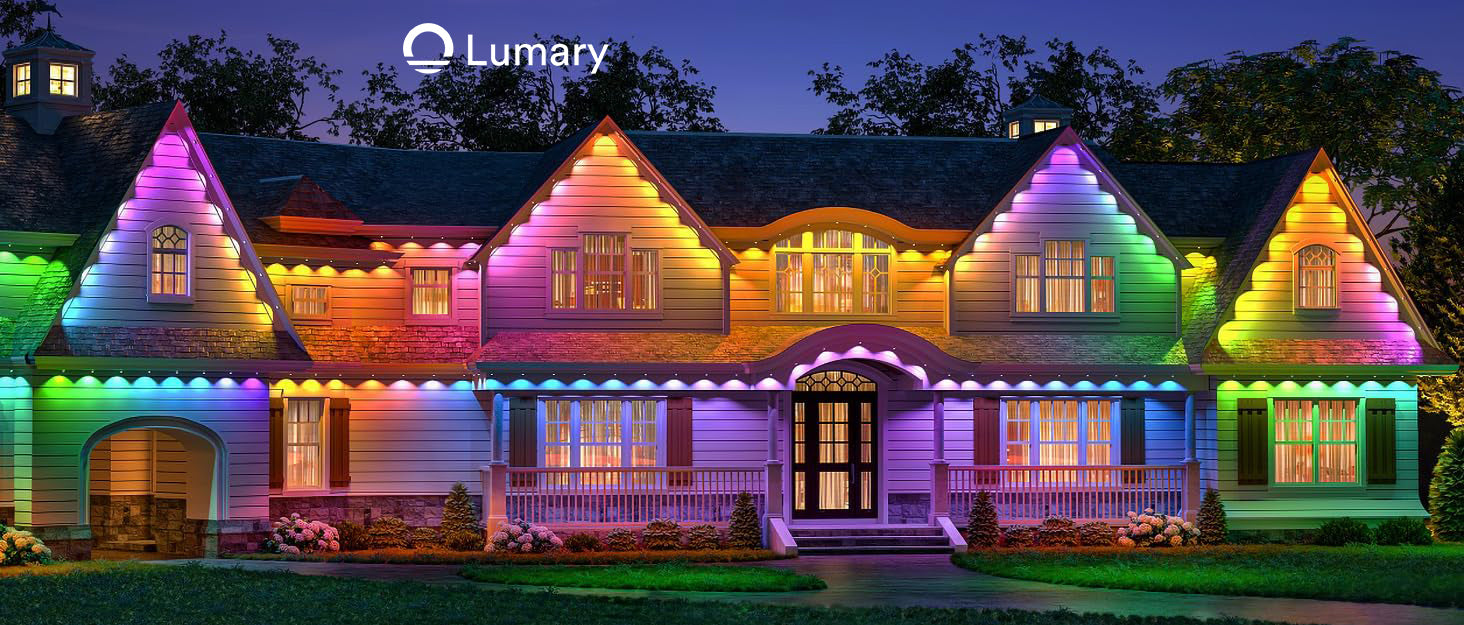Smart lighting has taken the world by storm. The market size reached USD 14 billion in 2023 and is projected to grow rapidly. DIY smart lights offer a fantastic way to personalize your home while saving money. You can control the ambiance, enhance security, and even sync lights with music. Dive into this project with confidence. Transform your living space into a smart haven that reflects your style and needs.
Understanding Smart Lighting

What is Smart Lighting?
Definition and Basic Components
Smart lighting refers to advanced lighting systems that offer more than just illumination. These systems integrate with your home's network, allowing you to control them remotely. Basic components include smart bulbs, switches, hubs, and controllers. Smart bulbs like the Phillips Hue Smart Light Bulb work with various smart home devices, such as Amazon Echo and Google Home. You can turn these lights on and off from anywhere with a Wi-Fi signal.
Benefits of Smart Lighting
Smart lighting provides numerous benefits. Energy efficiency stands out as a key advantage. You can set schedules to ensure lights are only on when needed. Enhanced security is another benefit. Remote control allows you to turn lights on or off when you're not home, giving the impression someone is there. Convenience also plays a big role. Adjusting brightness and color temperature from your phone or voice commands makes life easier.
Types of Smart Lighting Systems
Wi-Fi-based Systems
Wi-Fi-based systems connect directly to your home network. These systems offer robust features and easy integration with other smart devices. Products like the Lumary Smart Wi-Fi Recessed Can Light provide a wide range of colors and remote control via an app. Wi-Fi systems often support voice commands through platforms like Alexa and Google Assistant.
Bluetooth-based Systems
Bluetooth-based systems don't require a hub. These systems connect directly to your smartphone or tablet. Bluetooth systems are ideal for smaller setups or individual rooms. They offer quick and straightforward installation. However, they may lack some advanced features found in Wi-Fi systems.
Zigbee and Z-Wave Systems
Zigbee and Z-Wave systems use a mesh network. These systems require a hub to connect all devices. Zigbee and Z-Wave offer excellent range and reliability. They integrate well with other smart home devices. Products using these protocols often provide enhanced security features. These systems are perfect for larger homes requiring more extensive coverage.
Understanding these basics will help you make informed decisions for your DIY smart lighting project. Each system has its strengths, so choose one that fits your needs and preferences.
Planning Your DIY Smart Lights Project

Assessing Your Needs
Identifying Areas to Be Lit
Start by walking through your home. Identify the areas where you want to install diy smart lights. Think about rooms where you spend the most time. Consider spaces like the living room, kitchen, and bedroom. Don't forget hallways and outdoor areas. Each space has unique lighting needs. For example, the kitchen may need bright task lighting. The living room might benefit from ambient lighting. Write down each area and its specific requirements.
Determining the Type of Lighting Required
Next, decide on the type of lighting for each area. Ambient lighting provides overall illumination. Task lighting focuses on specific activities like reading or cooking. Accent lighting highlights features like artwork or architectural details. Think about how you use each space. Choose the lighting type that best suits those activities. For example, use accent lighting to highlight a painting in the living room. Use task lighting under kitchen cabinets for better visibility while cooking.
Budgeting for Your Project
Cost of Smart Bulbs and Fixtures
Budgeting is crucial for any diy smart lights project. Start by researching the cost of smart bulbs and fixtures. Smart bulbs can range from $10 to $50 each. Fixtures like recessed lights or smart lamps can cost more. For instance, the Lumary Smart Wi-Fi Recessed Can Light offers advanced features but comes at a higher price. Calculate the total cost based on the number of bulbs and fixtures needed. Remember, smart lighting often has a higher initial cost compared to traditional lighting.
Additional Costs (Hubs, Controllers, etc.)
Don't forget additional costs. Many diy smart lights systems require hubs or controllers. Hubs can cost between $30 and $100. Controllers and switches add to the expense. Also, consider the cost of any necessary tools or installation services. Some systems need professional installation, which increases the budget. Make sure to include these additional costs in your budget plan.
Planning your diy smart lights project involves careful assessment and budgeting. Identify the areas to be lit and determine the type of lighting required. Research the costs of smart bulbs, fixtures, and additional components. A well-planned project ensures a smooth installation process and a satisfying result.
Choosing the Right Smart Lighting Products

Smart Bulbs vs. Smart Switches
Pros and Cons of Smart Bulbs
Smart bulbs offer flexibility and ease of use. You can change colors, adjust brightness, and set schedules directly from your phone. The installation process is simple. Just screw in the bulb and connect it to your network. However, smart bulbs can be expensive. Each bulb costs between $10 and $50. If you need many bulbs, the cost adds up quickly. Also, smart bulbs may not work with existing dimmer switches.
Pros and Cons of Smart Switches
Smart switches control multiple lights from one location. This option works well for rooms with many light fixtures. You can use existing bulbs, which saves money. Smart switches integrate easily with home assistants like Alexa and Google Home. Installation requires some electrical work. You need to replace the existing switch with the smart switch. This process may require a professional if you are not comfortable with wiring. Smart switches also cost less per unit compared to smart bulbs.
Compatibility with Existing Systems
Ensuring Compatibility with Home Assistants (Alexa, Google Home, etc.)
Before buying smart lighting products, check compatibility with your home assistant. Most smart bulbs and switches work with popular platforms like Alexa and Google Home. Look for labels on the packaging or product descriptions online. Compatibility ensures seamless voice control and integration with other smart devices. For example, the Lumary Smart Wi-Fi Recessed Can Light works well with both Alexa and Google Assistant.
Checking Compatibility with Existing Wiring
Smart switches need proper wiring to function correctly. Check your home's wiring before purchasing. Older homes may lack a neutral wire, which many smart switches require. Consult an electrician if unsure about your wiring. Smart bulbs do not have this issue since they screw into standard light sockets. However, ensure your Wi-Fi network can handle the additional devices. A 2.4GHz Wi-Fi connection works best for most smart lighting systems.
Choosing the right smart lighting products involves understanding your needs and checking compatibility. Decide between smart bulbs and smart switches based on your setup and preferences. Ensure that your chosen products work with your home assistant and existing wiring. This careful selection process will lead to a smoother installation and better overall experience.
Installation Tips for DIY Smart Lights
Safety First
Turning off Power Before Installation
Always prioritize safety. Turn off the power at the circuit breaker before starting any installation. This step prevents electrical shocks and ensures a safe working environment. Use a voltage tester to confirm that no electricity flows to the fixture. Double-checking this step can save you from potential hazards.
Using Proper Tools and Equipment
Gather the necessary tools before beginning the installation. Common tools include a screwdriver, wire stripper, and voltage tester. Using the right tools makes the process smoother and safer. Ensure that you have a stable ladder if working on ceiling fixtures. Proper equipment helps you complete the job efficiently and safely.
Step-by-Step Installation Guide
Installing Smart Bulbs
- Remove the Old Bulb: Unscrew the existing bulb from the socket.
- Screw in the Smart Bulb: Insert the smart bulb into the socket and screw it in securely.
- Power On: Turn the power back on at the circuit breaker.
- Connect to Wi-Fi: Open the smart home app on your phone. Follow the instructions to connect the bulb to your Wi-Fi network.
- Customize Settings: Use the app to adjust brightness, color, and schedules.
Installing smart bulbs is straightforward. You can easily replace traditional bulbs with smart ones. The process involves minimal tools and effort.
Installing Smart Switches
- Turn Off Power: Switch off the power at the circuit breaker.
- Remove the Existing Switch: Unscrew the faceplate and disconnect the wires from the old switch.
- Connect the Smart Switch: Attach the wires to the corresponding terminals on the smart switch. Most smart switches require a neutral wire. Ensure proper connections to avoid malfunctions.
- Secure the Switch: Screw the smart switch into the electrical box and attach the faceplate.
- Power On: Restore power at the circuit breaker.
- Configure the Switch: Use the smart home app to connect the switch to your Wi-Fi network. Customize settings as needed.
Installing smart switches may require more effort. Basic knowledge of electrical wiring helps. If unsure, consult a professional. As a Smart Lighting Professional advises, "For larger installations and for kitting out an entire house, consider hiring a smart lighting professional."
Following these steps ensures a smooth and safe installation process. Whether installing smart bulbs or switches, proper preparation and attention to detail make the project successful.
Setting Up and Configuring Your System
Connecting to Your Home Network
Wi-Fi Setup
First, ensure your smart lights connect to your home Wi-Fi network. Open the smart home app on your phone. Follow the instructions provided by the app. For example, the Lumary Smart Wi-Fi Recessed Can Light requires a 2.4GHz Wi-Fi connection. Make sure your router supports this frequency. Enter your Wi-Fi credentials into the app. Wait for the lights to connect. Successful connection allows you to control the lights remotely.
Bluetooth Setup
Bluetooth setup differs slightly. Open the smart home app on your phone. Enable Bluetooth on your device. The app will search for nearby Bluetooth-enabled lights. Select the lights from the list. Follow the app's instructions to complete the pairing process. Bluetooth systems work well for smaller setups. No hub is required, making the installation quick and easy.
Using Smart Home Apps
Popular Apps and Their Features
Several apps help manage smart lighting systems. The Amazon Alexa app stands out for its voice controls and versatile connectivity. Alexa's interface is user-friendly. The app connects with many devices, including non-Amazon products. The TESLA Smart Home App offers simple control over various smart devices. The app supports multiple languages, making it accessible to many users.
Smart Lighting Apps integrate smart lights with platforms like Alexa, Google Assistant, and Siri. These apps allow voice commands to control the lights. The Wyze app pairs with Wyze smart bulbs. The app is easy to use and supports voice control through Alexa or Google Home. Users can set schedules, adjust brightness, and save favorite settings.
Customizing Settings and Schedules
Customizing settings enhances your smart lighting experience. Open the smart home app on your phone. Navigate to the settings menu. Adjust the brightness and color of your lights. Set schedules to automate your lighting routine. For example, schedule the lights to turn on at sunset and off at bedtime. Use the app to create scenes for different activities. A "Movie Night" scene might dim the lights and change the color to a soft blue.
Voice control adds another layer of convenience. Use voice commands to adjust settings without opening the app. Say, "Alexa, dim the living room lights," and watch the magic happen. Integration with other smart home devices offers even more possibilities. Connect your lights to motion sensors for automatic activation. Link them with smart thermostats for coordinated home automation.
Setting up and configuring your system involves connecting to your home network and using smart home apps. Wi-Fi and Bluetooth setups offer different advantages. Popular apps provide various features for managing your lights. Customizing settings and schedules tailors the lighting to your needs. Enjoy the convenience and flexibility that smart lighting brings to your home.
Maximizing the Benefits of Smart Lighting
Energy Efficiency
Using Schedules and Timers
Smart lighting can help lower energy bills. Use schedules and timers to control when lights turn on and off. Set lights to turn off during the day when natural light is available. Schedule lights to turn on only when needed, such as in the evening. This reduces unnecessary energy consumption. Studies show that smart lighting can cut energy use by up to 50% in indoor spaces.
Dimming and Color Temperature Adjustments
Adjusting brightness and color temperature can save energy too. Dim lights when full brightness is not required. Lower brightness levels consume less power. Use warmer color temperatures in the evening to create a cozy atmosphere. Cooler temperatures work well during the day for better visibility. Smart bulbs allow easy adjustments through an app or voice commands. Increased controllability leads to immediate savings.
Enhancing Home Security
Using Motion Sensors
Motion sensors add an extra layer of security. Install sensors in key areas like entryways and hallways. Lights will turn on automatically when motion is detected. This deters potential intruders by creating the illusion of occupancy. Motion-activated lights also provide safety by illuminating dark areas when someone enters.
Remote Control and Monitoring
Remote control and monitoring offer peace of mind. Control lights from anywhere using a smartphone app. Turn lights on or off while away from home to make it look occupied. Monitor the status of lights in real-time. Receive alerts if lights are left on, allowing immediate action. Smart lighting systems enhance security and convenience, making homes safer and more energy-efficient.
Troubleshooting Common Issues
Connectivity Problems
Wi-Fi Signal Issues
Weak Wi-Fi signals can disrupt smart lighting systems. Ensure the router is close to the smart lights. Walls and large objects can block signals. Move the router to a central location for better coverage. Consider using Wi-Fi extenders to boost the signal. Check the router's firmware for updates. Updated firmware can improve performance.
Interference with Other Devices
Other devices can interfere with smart lights. Microwaves, cordless phones, and baby monitors can cause issues. Keep these devices away from the router and smart lights. Change the Wi-Fi channel on the router. Less crowded channels can reduce interference. Use a dual-band router to separate devices. Place smart lights on the 2.4GHz band. Reserve the 5GHz band for other devices.
Performance Issues
Flickering Lights
Flickering lights can be annoying. Check the bulb's connection first. Loose bulbs can cause flickering. Tighten the bulb securely in the socket. Verify the power source. Unstable power can lead to flickering. Use a voltage tester to check the outlet. Replace faulty wiring if needed. Avoid using dimmer switches with smart bulbs. Many smart bulbs are not compatible with dimmers.
Delayed Responses
Delayed responses can frustrate users. Ensure the smart home app is up to date. Outdated apps can cause delays. Restart the router and smart lights. A fresh start can resolve many issues. Check the network speed. Slow internet can lead to delays. Upgrade the internet plan if necessary. Reduce the number of connected devices. Too many devices can slow down the network.
Troubleshooting common issues ensures a smooth smart lighting experience. Address connectivity problems by optimizing the Wi-Fi signal and reducing interference. Resolve performance issues by securing connections and updating software. Enjoy the benefits of a well-functioning smart lighting system.
You now have the knowledge to start your DIY smart lights project. You can transform your home with personalized lighting. Smart lighting offers many benefits. You can control every light with simple commands and automation. You can enhance security and save energy. You will find satisfaction in completing your project. Dive into the world of DIY smart lights and enjoy the convenience and customization.


